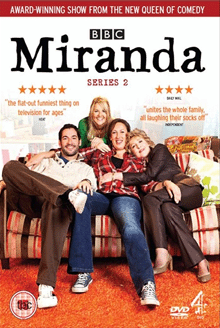
Danny John-Jules recently had a thing or two to say about the new series of Red Dwarf in our exclusive interview – specifically, the fact that it is going to be filmed in front of a studio audience again. ‘Everyone missed the studio audience bit,’ commented John-Jules. ‘It’s a different play, it’s a different rhythm when you’ve got a studio audience and I like that. Not everyone can do sitcom. It’s like being in the theatre and being in the TV studio at the same time.’
This got us thinking about the ups and downs and ups again of the traditional British studio sitcom.
Famously, when Victoria Wood was making Dinnerladies in 1998, she felt that the emergence of a certain Royle Family the same year made the execution of her own efforts seem stagey and formulaic by comparison. Caroline Aherne’s The Royle Family was certainly the sitcom for the Britpop generation – the Oasis to Dinnerladies’ John Shuttleworth. Even the title music was the Manchester band’s Half the World Away.
Liberating the sitcom from the over-lit, multi-camera, studio audience model did wonders for The Royle Family, and ushered in a new satire boom in sitcom, where the intrusive, single-camera naturalism of the direction matched the faux-naturalism of the subject matter.
This was the era of the mockumentary sitcom, exemplified by The Office, in which big name stars were out and performers who could embody the awkward diffidence of the documentary subject were in.
Victoria Wood had done this years before, of course, in her excruciatingly tragicomic ‘Swim the Channel’ sketch, and would have done so again in Dinnerladies, had the BBC light entertainment department not been so rigid in its commitment to thinking inside the box.
But that’s what studio sitcoms were throughout ‘70s, ‘80s and early ‘90s – foursquare, boxed in – and rightly, for a period, we fell out of love with them, forgetting the affectionate warmth they had inspired in us as we did so.
By the late noughties, if the sitcom world was a family, then Outnumbered was the new kid on the block, showing the oldsters how to do it, but still with a nod or two to its TV heritage. My Family was the maiden aunt, refusing to get with the times, and insisting on dancing to all the old tunes, while somewhere in the corner, inbreeding and furtively planning the parricide of Auntie Beeb were the kissing cousins of Psychoville and The Mighty Boosh.

Then, along came Miranda Hart, with more knowing looks to camera than Christopher Biggins in a Come Dine With Me celebrity special. Suddenly, catchphrases were back in, as 2009’s surprise hit embraced a world of ‘what I call’ ‘such fun’. There was even a sofa.
Cheeky, unthreatening and what Miranda might herself describe as ‘saucy’, this was sitcom in inverted commas: Bridget Jones as played by a female Bernard Bresslaw. By rights, it should have fallen flat on its face as many times as its heroine herself. But the welcome novelty of having a sitcom headed by a female clown has sustained it.
The fourth-wall-breaking glances of Miranda have become the programme’s stock in trade, but everyone’s in on the joke: Miranda, the studio audience, viewers at home, and her fellow cast members, who line up at the end to wave and dance, in what feels like an updated version of the closing ‘You have been watching’ sequence from Hi-de-Hi. For those of us who were never quite as Britpoppy as we wanted to be, it’s encouraging to feel that naff is finally back – in fact, naff is the new cool.
But it’s not really naff at all, of course. It’s affectionate fun – a world where the whoops and cheers of the audience are part of the communal experience of watching the show. Sofa facing sofa; knowing grin facing knowing grin. It won’t be the trend forever; but, for the time being, we’re happy that kitsch is back.
> Buy the Miranda Series 1-2 boxset on Amazon.
Watch our exclusive chat with Miranda star Tom Ellis about when Series 3 will air…

